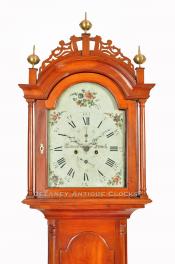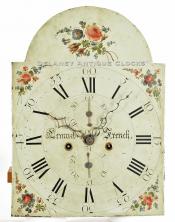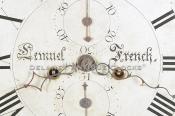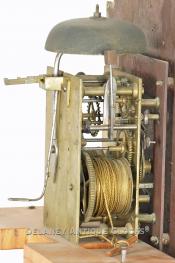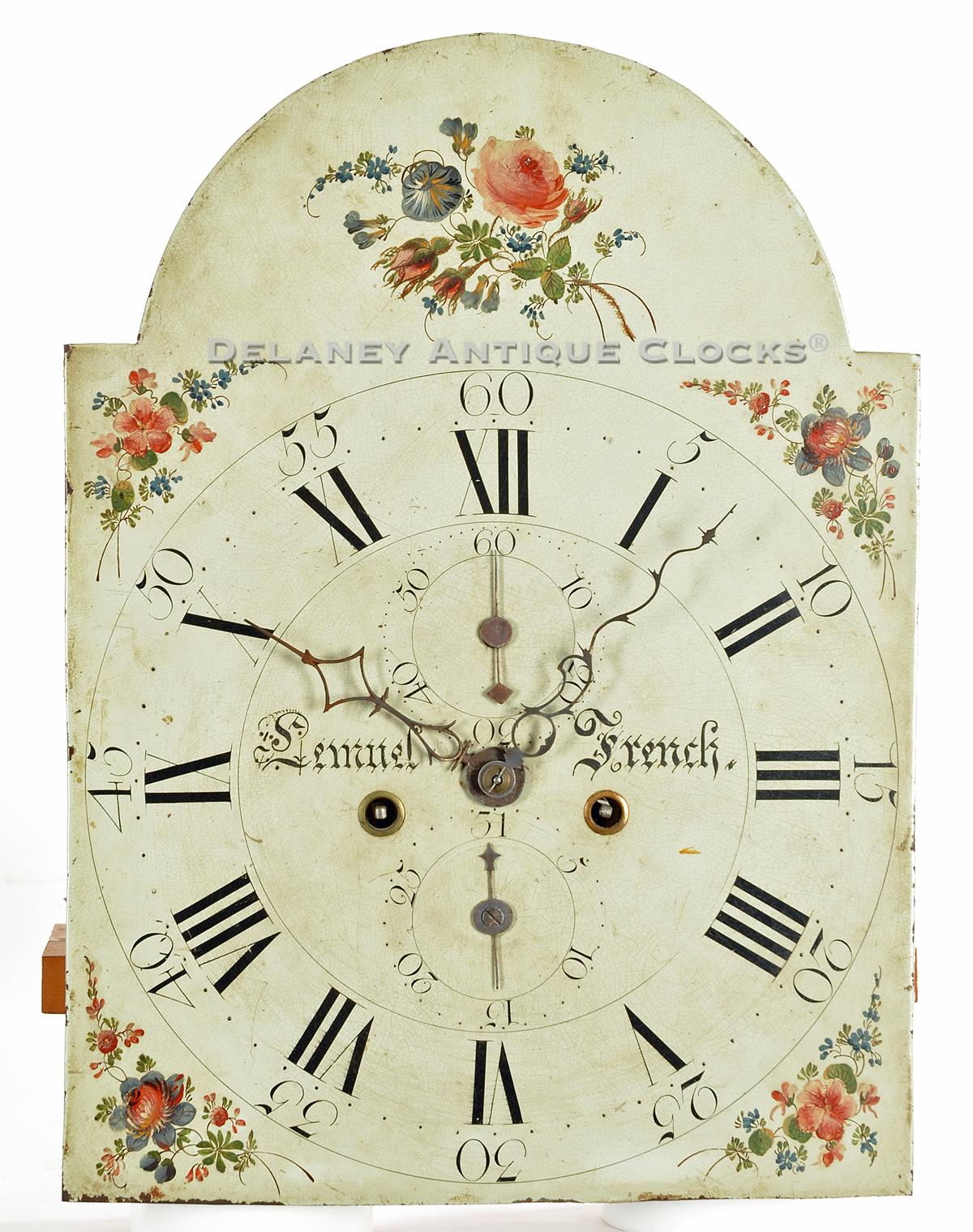Lemuel French of Stoughton and Canton, Massachusetts. Clockmaker and brass founder. 215018.
This fine cherry case tall clock is narrowly proportioned. The cherrywood selected exhibits a good grain pattern and a warm color. Cherry is traditionally a straight-grained wood. To find it with this much figure is somewhat unusual. This example sits flat on the floor on a double-stepped molding applied to the base. It appears that this case never had feet. The waist section is long and narrow. A tombstone-shaped waist door accesses the interior of the case. This door is also trimmed with a simple molded edge. Open this door, and one will find the two drive weights and pendulum. Inset quarter columns are positioned on the front corners of the waist. These are smoothly turned and terminates in turned wooden quarter capitals. These capitals are a simplistic design. The bonnet door is an arched form and is fitted with glass. Fully turned and shaped bonnet columns are secured at the four corners of the hood. Windows or tombstone-shaped sidelights are incorporated into the sides of this bonnet. A traditional New England-style fretwork is fitted to the top of the hood. This is anchored by three chimney plinths. Each of these supports a brass ball and spiked finial.
This painted iron dial is in excellent original condition. It is an imported dial painted by Osborne's Manufactory. Free-floating floral decorations are positioned in each of the four spandrel areas as well as in the arch. The colors are excellent. The time ring is formatted with Roman-style hour figures. Each of the five-minute markers is indicated in an Arabic form. A subsidiary seconds dial and calendar date dial are located inside the hour ring. The Maker's name is boldly signed across the middle of the dial. It is quite clear and easy to read.
The time and strike movement is brass, has an eight-day duration, and is of good quality. It is weight-driven and is designed to strike each hour on a cast iron bell. The strike train is actuated by a rack and snail setup. It is interesting to note that the hammer return is powered by a coil spring and that Lemuel French embellished this movement with a number of extra ring-turned designs on many of the wheels.
This clock stands a very manageable 7 feet 3 inches tall. It is 20.5 inches wide and 10.5 inches deep at the upper bonnet molding.
It was made circa 1795. Inventory number 215018.
Very little is currently known of Lemuel French. Most of what is known is sourced from Paul J. Foley's book, Willard's Patent Time Pieces, A History of the Weight Driven Banjo Clock 1800-1900. Foley does not list a birth date for French. It is recorded that he died in Canton in 1809. French is identified in several lawsuits as a clockmaker in the towns of Stoughton and Canton. In 1797 he was listed as a Stoughton Clockmaker. In 1798 he moved to Canton and worked there until at least 1805. He is also reported to have been a partner of Henry Morse Jr in Canton in 1803.


